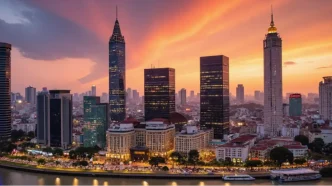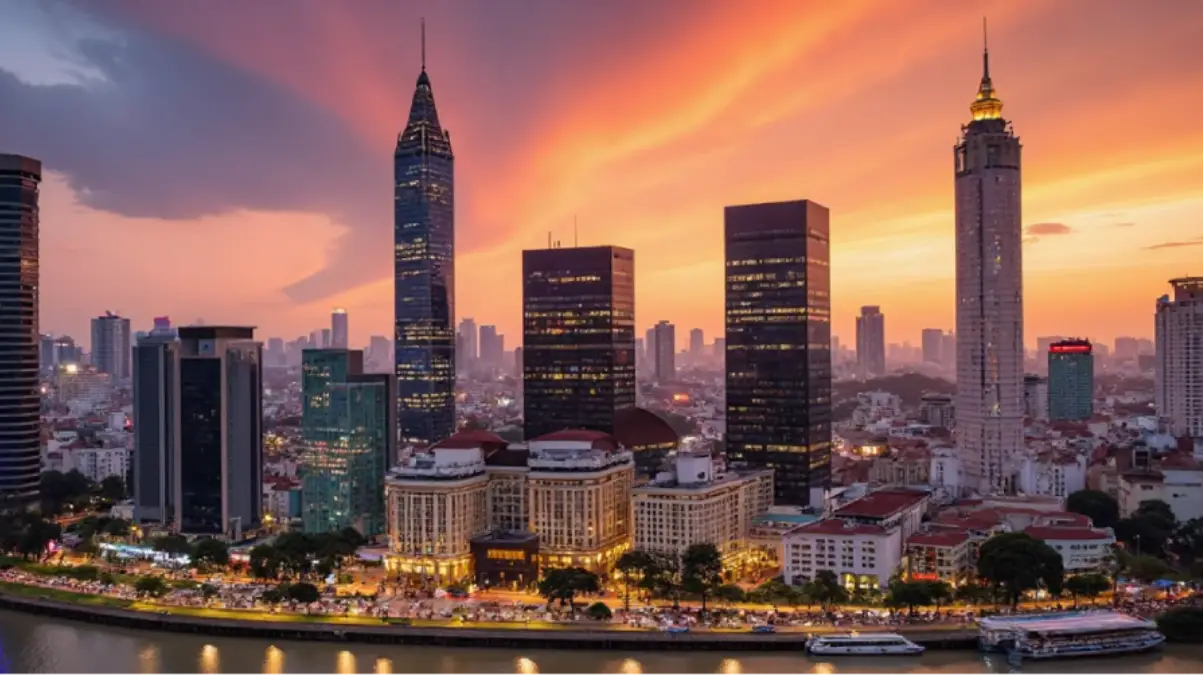In 2025, Ho Chi Minh City’s real estate market thrives on urban growth, with 20–25% price surges, 4–6% rental yields, and $7 billion in infrastructure fueling demand. With 12 million visitors and a $5 billion condo sector, the city outpaces Vietnam’s 10–15% property growth. High demand and low supply, however, challenge investors seeking condos, houses, or luxury villas.
The Market’s Momentum
Ho Chi Minh City’s economy, driven by finance, tech, and tourism, projects 12 million visitors in 2025. Condos in District 1 and Thu Duc ($260,000–$350,000, 60 sqm) yield 4–6%, with 60% Airbnb occupancy and $100–$150 daily rates. Luxury condos hit $600,000, houses in District 7 average $600,000, and luxury villas in District 2 reach $2 million. Q1 2025 saw 5,000 condo units sold for $1 billion (24,000 VND = 1 USD), but 10% unsold inventory hints at oversupply risks in Binh Thanh.
“Ho Chi Minh City’s market is Vietnam’s growth engine,” says Nguyen Van Minh, a District 1-based property agent with 12 years of experience. “Metro lines and bridges are reshaping investment hotspots.”
Q1 2025 Market Snapshot
| Metric | Value |
|---|---|
| Median Condo Sale Price | VND 6 billion (~$250,000 USD) |
| Median Luxury Condo Sale Price | VND 18 billion (~$750,000 USD) |
| Median House Sale Price | VND 19.2 billion (~$800,000 USD) |
| Median Luxury Villa Sale Price | VND 48 billion (~$2,000,000 USD) |
| Tourist Visitors (2025 Projection) | 8.5 million |
| Unsold Condo Inventory | 10% |
| Annual Price Growth | 12–15% |
Infrastructure Fueling Growth
Vietnam’s $7 billion investment in Ho Chi Minh City’s 2025 infrastructure supercharges property values. Metro Line 1 ($2 billion) and Thu Thiem Bridge ($1.5 billion) boost District 2 prices by 40%. Tan Son Nhat Airport’s $2 billion expansion targets 50 million passengers by 2030, lifting District 1 rentals. Road upgrades ($1.5 billion) ease suburban access, though supply shortages persist.
Ho Chi Minh City Infrastructure Spending (2025) – $7.00 B USD
Investment Dynamics
From 2020 to 2025, $2 billion flowed into Ho Chi Minh City’s real estate: 60% ($1.2 billion) for condos, 30% ($0.6 billion) for houses and villas, and 10% ($0.2 billion) for commercial. Foreign buyers, mainly Chinese and Koreans, drove 30% of 2023 condo sales and 15% of villa purchases, targeting projects like Empire City ($300,000–$600,000) and Sala Residence ($500,000–$2M). The charts below track prices, foreign buyer share, and price/sqm for condos, luxury condos, houses, and luxury villas.
Condo Prices in Ho Chi Minh City (2024–2025 & Max)
Luxury Condo Prices in Ho Chi Minh City (2024–2025 & Max)
House Prices in Ho Chi Minh City (2024–2025 & Max)
Luxury Villa Prices in Ho Chi Minh City (2024–2025 & Max)
Why Ho Chi Minh City Stands Out
Ho Chi Minh City’s yields (4–6%) and growth (20–25%) exceed Vietnam’s 10–15% average, with infrastructure shielding investors from global economic shifts. Foreign buyers, capped at 30% for condos and 10% for villas, target projects like Vinhomes Grand Park and Diamond Island, drawn by the city’s urban vibrancy.
Navigating Challenges and How to Ride the Wave
Ho Chi Minh City’s market dazzles, but a 10% unsold inventory risks price corrections if demand slows. Supply constraints (3,000 new condo units, 800 houses) favor projects like Sala Residence. Investors should target District 2 and Thu Duc, where metro lines drive growth, and engage local agents to navigate ownership laws.
Ho Chi Minh City’s $8 billion real estate market, backed by $7 billion in infrastructure, anchors Vietnam’s $53.75 billion sector in 2025. “Focus on metro-adjacent properties for maximum returns,” advises Minh.
Disclaimer: Some of the property price data is sourced from various international real estate business 2025 property reports. Although we have undertaken detailed analysis, prices are estimates and may vary by project. Always consult a legal advisor before investing and partner with a reputable real estate agent or agency.













